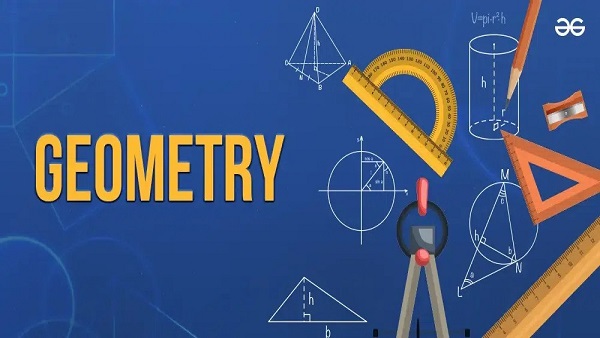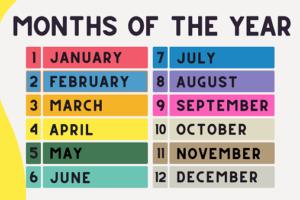
From Angles to Proofs: The Ultimate Geometry Homework Helper
Geometry Homework Helper is more like a secret code a language of shapes and sizes that holds the key to the simplest to deepest secrets of the universe. Have you ever thought about why parallel lines never meet, yet the angles they form can tell us so much about the world around us?
It is probably one of the most interesting branches of mathematics, where the concepts of other branches of science meet. At times, this increases the complexity of the subject, compelling students to seek an expert geometry homework helper from this site. These professional homework helpers assist students in crafting perfect geometry assignments and scoring impressively on them.
If you are wondering where you can get a homework helper, then let me tell you: there are thousands of them available online. They need not have to be a person; a geometry tool can help you to find the correct solution, and even this blog can show you the right path. Let us find out how.
Angles
Let's start with the basic angles. Imagine angles as the architects of space, dictating how lines intersect and creating the blueprint for the geometric universe. From acute angles, like a ninja's precision kick, to obtuse angles reminiscent of a yawn-inducing lecture, these measures of rotation give structure to our spatial reality.
Acute Angles: These are like the short and sweet moments in life. Picture a cute puppy or a perfectly executed high five that's the essence of acute angles. They are less than 90 degrees, and just like those moments, they leave you wanting more.
Obtuse Angles: On the flip side, obtuse angles are prolonged experiences. Think of waiting in line at the DMV or enduring a never-ending PowerPoint presentation. These angles exceed 90 degrees, and much like a lengthy meeting, they demand patience.
Parallel Lines
"Why do parallel lines never meet?" This question has puzzled minds for centuries. Parallel lines are like lifelong friends, no matter how far they travel, they remain side by side, never converging, and they have a bond stronger than superglue.
Parallel Universes: Think of parallel lines as pathways to different universes. They run alongside each other, each with a unique story. Just like how you and your friend might take different life paths but remain connected, parallel lines maintain their unbroken companionship.
Infinity and Beyond: Mathematicians often say that parallel lines meet at infinity. It's a mind-bending concept, like reaching the edge of the universe. The idea is that if you keep extending those lines, they'll eventually touch, but only in the realm of infinity – a place our finite minds struggle to comprehend.
Triangles
Now, let's talk about triangles the holy trinity of geometry. These three-sided wonders are the building blocks of shapes and the cornerstone of geometric proofs.
Scalene, Isosceles, Equilateral: Triangles come in various flavors. Scalene triangles have sides of different lengths, like a mismatched trio in a buddy cop movie. Isosceles triangles have two sides of equal length, creating a sense of balance. Equilateral triangles are the OGs – all sides are equal, bringing harmony to the geometric world.
The Pythagorean Theorem: Cue the drumroll for the Pythagorean Theorem, the rockstar of geometry. In a right-angled triangle, the square of the hypotenuse is equal to the sum of the squares of the other two sides. It's like the secret chord that unlocks the harmony of right-angled triangles everywhere.
Quadrilaterals
As we move beyond triangles, we encounter quadrilaterals, the square dancers of geometry. These four-sided figures come in all shapes and sizes, from the classic square to the slightly irregular parallelogram.
Parallelograms: Picture two pairs of parallel lines dancing together, that's a parallelogram for you. They glide gracefully, maintaining their parallel partnerships, creating an aesthetic display of geometric choreography.
Rhombus, Rectangle, Square: Each quadrilateral has its unique flair. The rhombus, with equal sides but no right angles, is the rebel in the group. The rectangle brings order with its right angles, while the square combines the best of both worlds – equal sides and right angles- and is the VIP of the quadrilateral party.
Geometry Proofs:
Now, let's learn about the geometry proofs. Think of proofs as detectives solving a crime – each step is a clue leading to the grand revelation.
Proof by Contradiction: This method is like Sherlock Holmes at his best. Assume the opposite of what you want to prove, follow the logical steps, and if you end up with a contradiction, voila, you've cracked the case!
Proof by Induction: Imagine a domino effect, if you can prove something for a base case and show that if it's true for one case, it's true for the next, and so on, you've mastered proof by induction. It's like building a tower of logic, one block at a time.
Geometry in the Real World
"When will I ever use this in real life?" This is a classic question every geometry student asks. Surprisingly, geometry is everywhere, hiding in plain sight and shaping the world around us.
Architectural Marvels: Ever marveled at the beauty of architectural wonders? From the pyramids of Egypt to the modern marvels of skyscrapers, geometry is the unsung hero, ensuring structural integrity and aesthetic perfection and also helping in educational activities.
Navigation and Cartography: Next time you use GPS, thank geometry. The algorithms that guide you through the labyrinth of roads are deeply rooted in geometric principles. Cartographers also owe a debt to geometry, mapping our world with precision.
Putting It All Together
Geometry Homework Helper isn't just about memorizing theorems and formulas. It's about understanding the language of shapes and the dance of angles. It is not just a subject, it's the key to decoding the secrets of the universe, one angle at a time.



